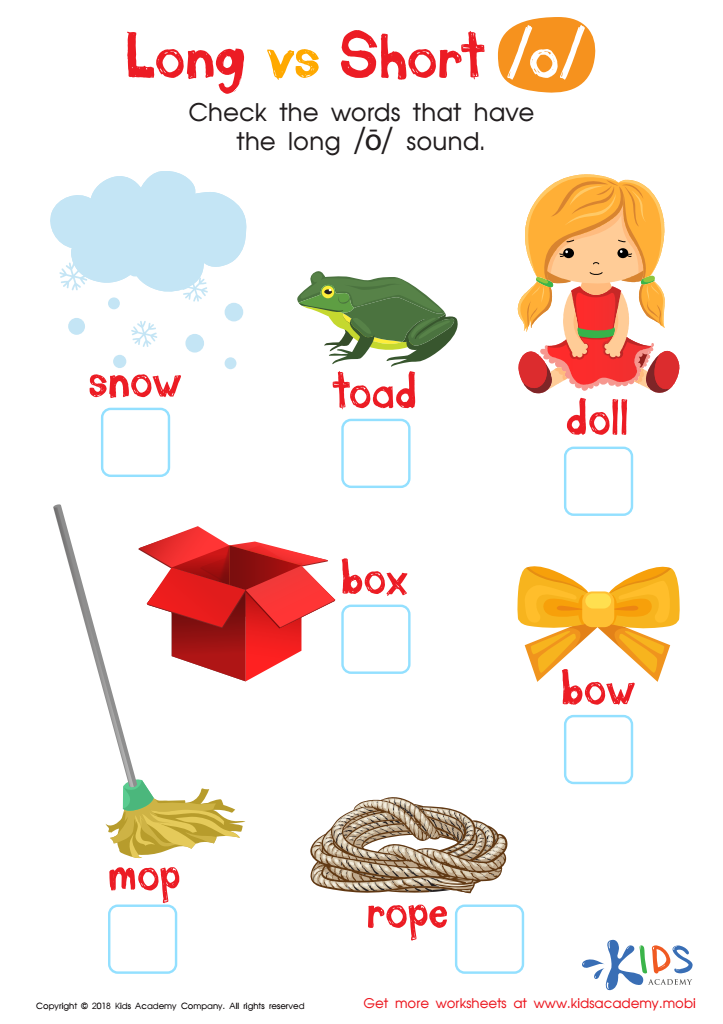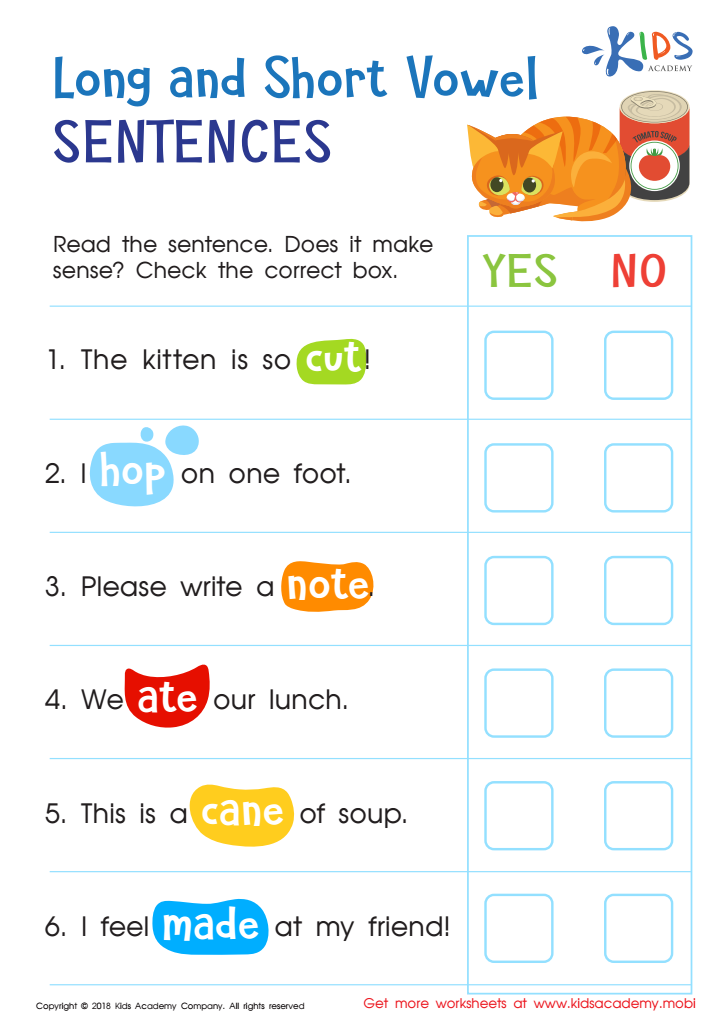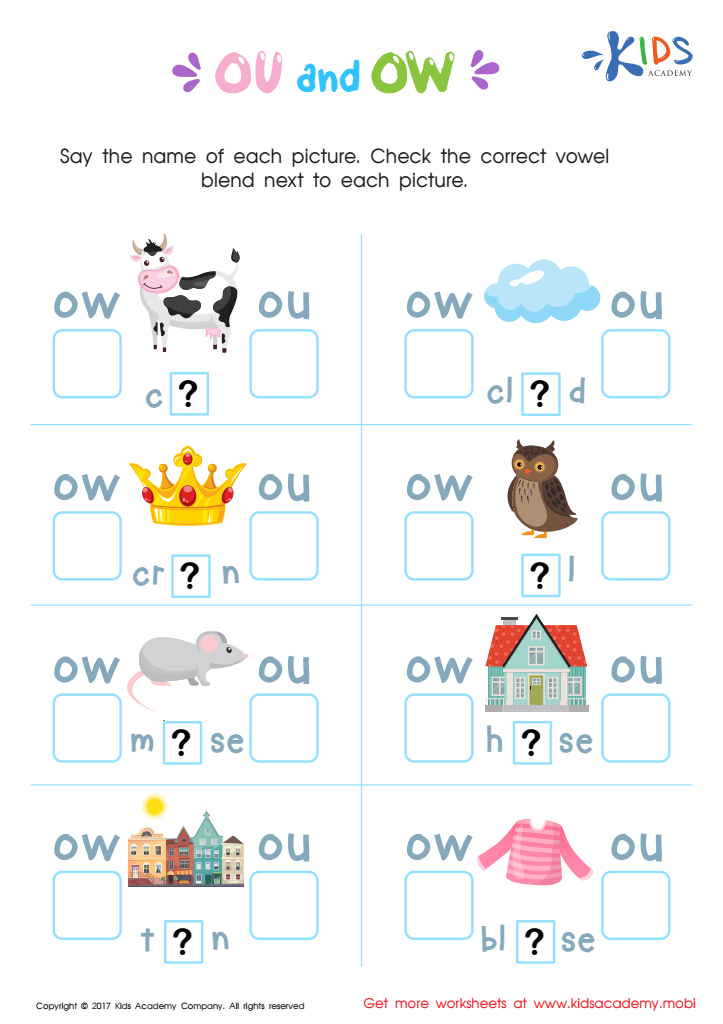Sound differentiation Normal Alphabet Worksheets for Ages 4-9
3 filtered results
-
From - To
Discover our Sound Differentiation Normal Alphabet Worksheets, designed for kids aged 4-9. These fun and engaging worksheets help young learners distinguish between different sounds, enhancing their phonics and reading skills. Each sheet features colorful illustrations and a variety of activities that support auditory discrimination, blending, and segmenting. Tailored to support emerging readers, these resources foster confidence and literacy development through interactive and playful learning. Perfect for classroom or at-home practice, boost your child's sound differentiation abilities with these expertly-crafted worksheets from Kids Academy. Start your child’s educational journey today!


Long vs Short O Reading Worksheet


Long and Short Vowel Sentences: Assessment Worksheet


OU and OW Words Worksheet
Sound differentiation in the normal alphabet is a critical foundational skill for children ages 4-9, and it significantly impacts their language development, reading proficiency, and overall academic success. During these formative years, children are highly perceptive and rapidly developing their phonemic awareness—the ability to discern and manipulate individual sounds in words. This skill is paramount for decoding words, spelling, and eventually becoming fluent readers.
When parents and teachers prioritize sound differentiation, they help children develop the ability to recognize and produce the unique sounds associated with each letter of the alphabet. This understanding is the cornerstone of phonics, the method of teaching reading by correlating sounds with letters or groups of letters.
Additionally, early sound differentiation enhances cognitive skills, such as memory and attention, by engaging children in activities that require listening and processing sounds. Effective sound differentiation also supports clear and precise speech, which is fundamental for effective communication.
Ultimately, mastery of sound differentiation in the alphabet sets the stage for lifelong literacy. It ensures that children enter school ready to learn and progress academically, sparking a love for reading and learning that benefits them throughout their education and beyond. For these reasons, attentive parents and proactive teachers champion sound differentiation as a vital component of early childhood education.

 Assign to My Students
Assign to My Students



















